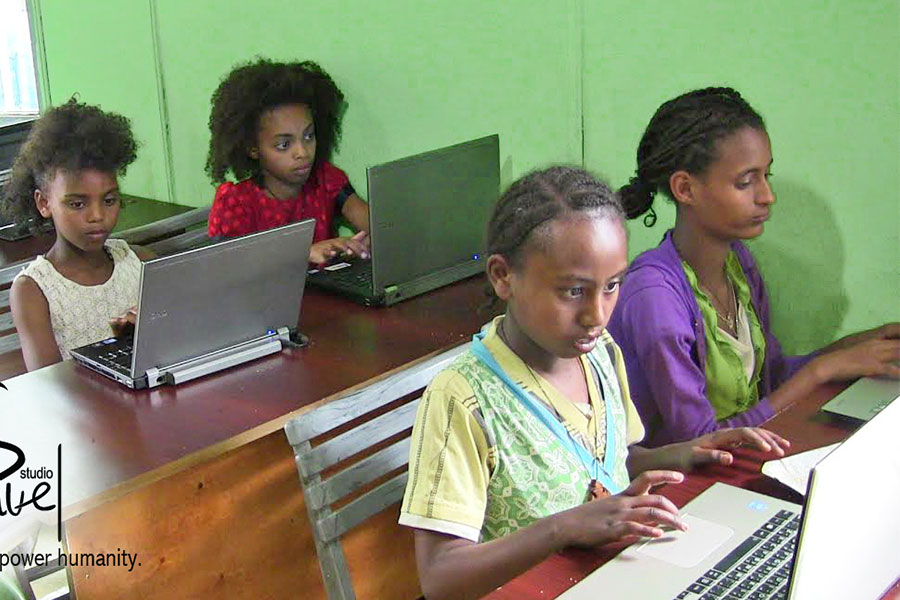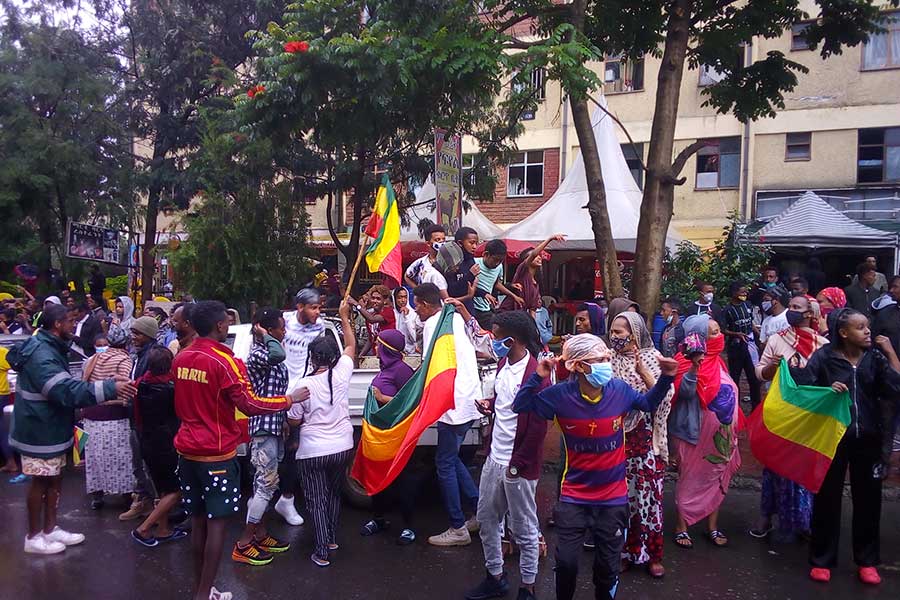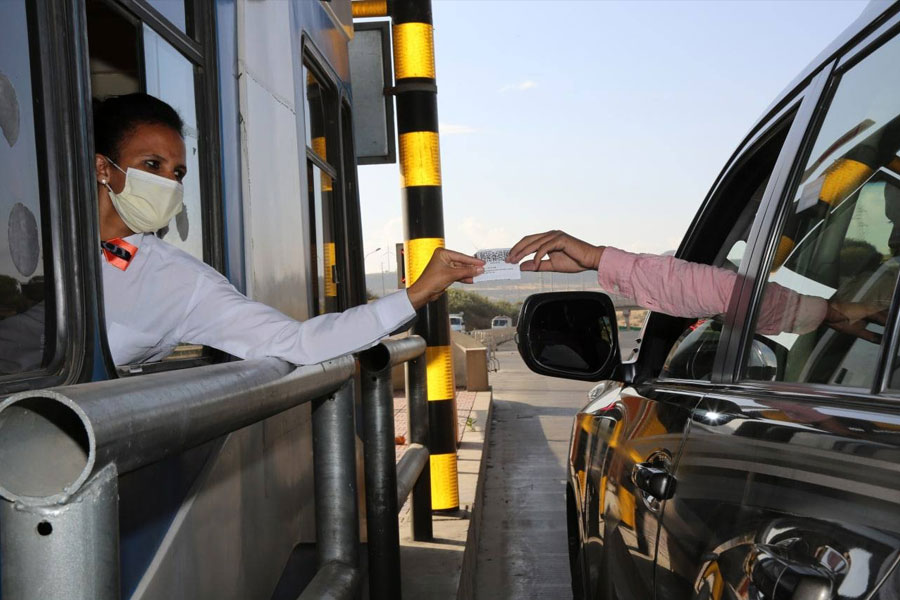
Amanawit Dagnchew is a 25-year-old married mother who was born in Asko, Addis Abeba. Life used to be hard for her, but now she has formed a family and has graduated from college.
When she was just in elementary school, her father passed away, leaving Amanawit, her brother and mother, who had health problems, unable to provide for the family.
But a 25-year-old local non-governmental organization (NGO), Mary Joy Ethiopia, came to their rescue. A monthly stipend of 350 Br was allocated to each child, and a guardian, in the parlance of the group, was assigned to check up on the family once or twice a month. The siblings were beneficiaries of Mary Joy’s 15-year-old, community-based programme where orphaned and vulnerable children who are supported within the community. But few get the same opportunity that Amanawit and her brother did.
There were 4.6 million orphans in Ethiopia in 2017, according to UNICEF. The underlying reasons are conflicts, natural disasters and diseases such as HIV/AIDS.
Of the 153 million orphans worldwide, Ethiopia accounts for the fourth largest share following India’s 31 million, China’s 20.6 million and Nigeria’s 12 million orphans.
To care for these vulnerable children, cities have established government orphanages and Addis Abeba has four. Each orphanage has around 200 children, some of whom are as young as one-day old.
The four orphanages employ a total of 500 hundred employees including nurses, social workers and counsellors.
Aside from these, the city is host to 30 NGOs that support vulnerable children at various stages. However, there is a huge gap between the capacity of these NGOs and the vulnerable children in Addis Abeba, which even by the estimates of the 2007 census number around 100,000.
“All the 30 local NGOs together have a capacity of supporting less than 2,000 children,” Genet Petros, director of the city's Women & Children Office, told Fortune. Currently, only 1,375 orphans are being raised by these NGOs.
Inter-country adoptions, where children are adopted out of their native countries, has also recently been blocked by the government.
Early this year, parliament passed a bill to ban adoptions of Ethiopian children by non-nationals. The public sentiment toward adoption by non-nationals soured in 2011 when a 13-year-old girl of Ethiopian origin died the hands of her abusive adoptive American parents.
Members of the parliament argued that vulnerable children should be cared for and supported by local systems to protect them from abuse abroad. Indeed, after the 2011 case, adoptions from Ethiopia dropped two-fold to just 983 children in 2014. This number nonetheless corresponds to an international decline in inter-country adoptions.
“The justification is based primarily on the benefit of children being raised in their own countries through finding alternative ways of childcare,” Dereje Tegyibelu, legal department director of the Ministry of Women, Children & Youth Affairs, says. “But the major factor was the prevalence of government officials that prepare fake documents and middlemen that try to persuade parents to send their children abroad.”
It was growing out of hand where individuals were able to profit by charging up to 250,000 Br for a single child by facilitating adoption for non-nationals, according to Dereje.
Ahead of the ban, countries such as Australia and Denmark banned adoptions from Ethiopia.
In June 2012, Australia’s government announced its decision to close the Ethiopia Australia Intercountry Adoption Program. Denmark banned all adoptions from Ethiopia in 2016, citing “inconsistent information” from Ethiopian adoption agencies on the origins of children.
Karen Elleman, the former Danish minister of the Interior & Social Affairs, said she did not “have the confidence” that adoptions from the country “live up to the requirements we have in regards to the adoption process.”
Before this confluence of factors, Ethiopia has one of the biggest sources of children for inter-country adoptions. In the United States, children of Ethiopian origin made up about a fifth of the total international adoptions. More than 15,000 Ethiopian children have been adopted in the US since 1999 until the ban last year.
Many are also adopted by parents of European origin, including Spain, France and Italy.
“The nation lacked an organised vital events registration system. The government was unable to curb the abuse of the inter-country adoption policy, which ultimately played into the decision to ban it,” Derege says.
But some MPs raised their concerns about the ban, arguing the country is unable to deliver proper alternatives.
“Even though it is best for children to grow up in their communities of origin, a lot should have been done ahead of the ban in inter-country adoptions,” Genet says. “The local NGOs have limited resources, and there is little awareness in the society about domestic adoptions.”
At the beginning of this Ethiopian new year, the Addis Abeba City Administration launched a campaign of volunteerism to help needy children that live below the poverty line. Adopting children was part of the campaign, and Zinash Tayachew, the wife of Prime Minister Abiy Ahmed (PhD), adopted a child in to her famliy from one of the adoption centres in the city.
Addis Abeba’s Women & Children Affairs Office is trying to realise alternatives to the now banned inter-country adoptions and even orphanages, and has adopted the motto, “No child should be raised in institutions."
The office is implementing programs and encouraging local NGOs to follow the community-based programmes to support orphaned and vulnerable children.
“It is so crucial in that cultural and emotional gaps can best be fulfilled in this way,” says Yeshiwas Abate, programme coordinator of Mary Joy Ethiopia. “Despite the current efforts done by various actors, strong rehabilitation centres are still needed.”
The programme intends to enable children to be raised by close family members or within an extended family.
This is also preferred by experts who say adoptions makes children vulnerable to identity crises, psychological problems and violation of rights and that institutionalisation should not be encouraged.
"In the Ethiopian culture, extended families are the best options for adoptions," Rahel Kassa, a researcher from the Ethiopian Sociological & Social Work Association, says.
She also believes that orphanages should be the last option for raising children, a sentiment Yasin Ali, lecturer of psychology with nearly a decade of experience at Wello University.
"Orphanages do not give psychological and emotional attachments that could be found from living with a family or the extended families," he says.
Ethiopia is categorised as a less than child-friendly country in 2018, according to the Child Friendliness Index. The study adds that national income is not necessarily the primary factor in determining the child friendliness of states.
PUBLISHED ON
Nov 21,2018 [ VOL
19 , NO
969]

Editorial | Sep 01,2024

View From Arada | Jan 03,2021

Radar | May 16,2020

Radar | Aug 08,2020

Fortune News | Oct 17,2020

Commentaries | Jun 08,2024

Fortune News | May 04,2019

Viewpoints | Jan 15,2022

Radar |

Fortune News | Nov 12,2022

Dec 22 , 2024 . By TIZITA SHEWAFERAW
Charged with transforming colossal state-owned enterprises into modern and competitiv...

Aug 18 , 2024 . By AKSAH ITALO
Although predictable Yonas Zerihun's job in the ride-hailing service is not immune to...

Jul 28 , 2024 . By TIZITA SHEWAFERAW
Unhabitual, perhaps too many, Samuel Gebreyohannes, 38, used to occasionally enjoy a couple of beers at breakfast. However, he recently swit...

Jul 13 , 2024 . By AKSAH ITALO
Investors who rely on tractors, trucks, and field vehicles for commuting, transporting commodities, and f...

Jul 12 , 2025
Political leaders and their policy advisors often promise great leaps forward, yet th...

Jul 5 , 2025
Six years ago, Ethiopia was the darling of international liberal commentators. A year...

Jun 28 , 2025
Meseret Damtie, the assertive auditor general, has never been shy about naming names...

Jun 21 , 2025
A well-worn adage says, “Budget is not destiny, but it is direction.” Examining t...